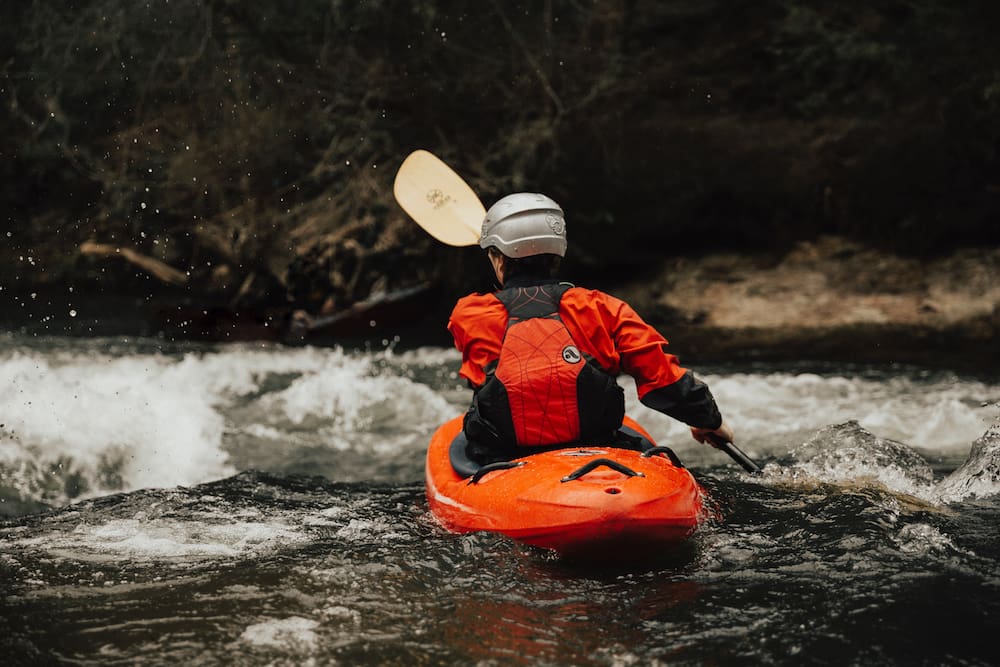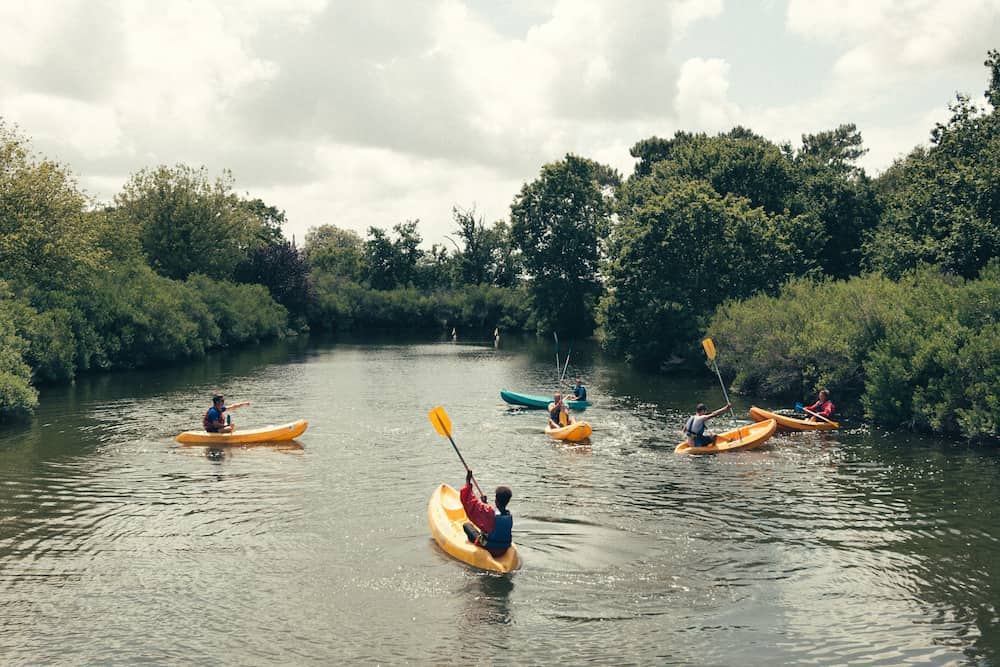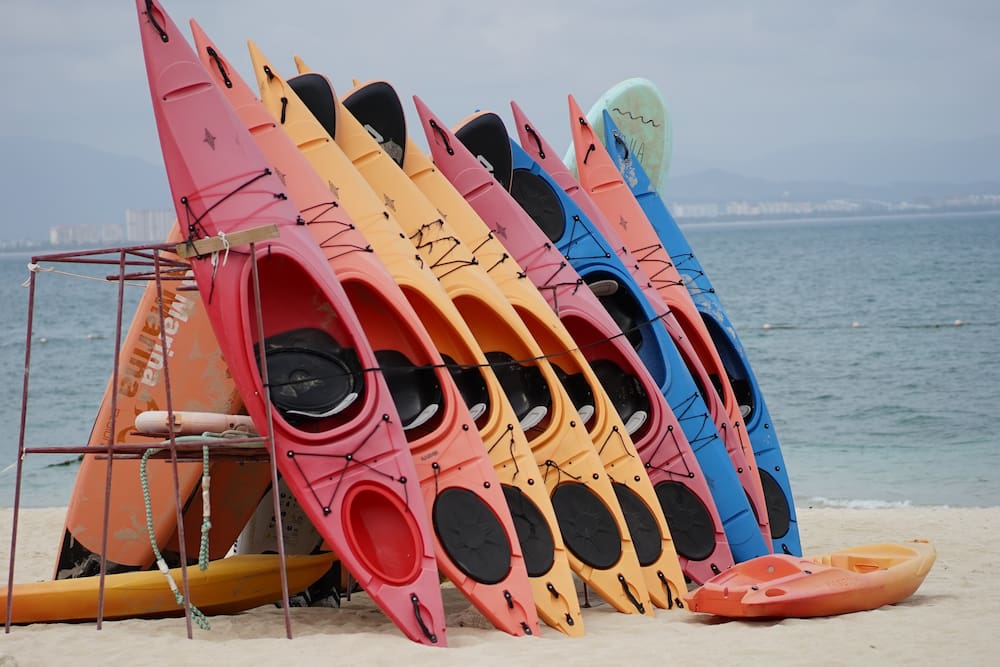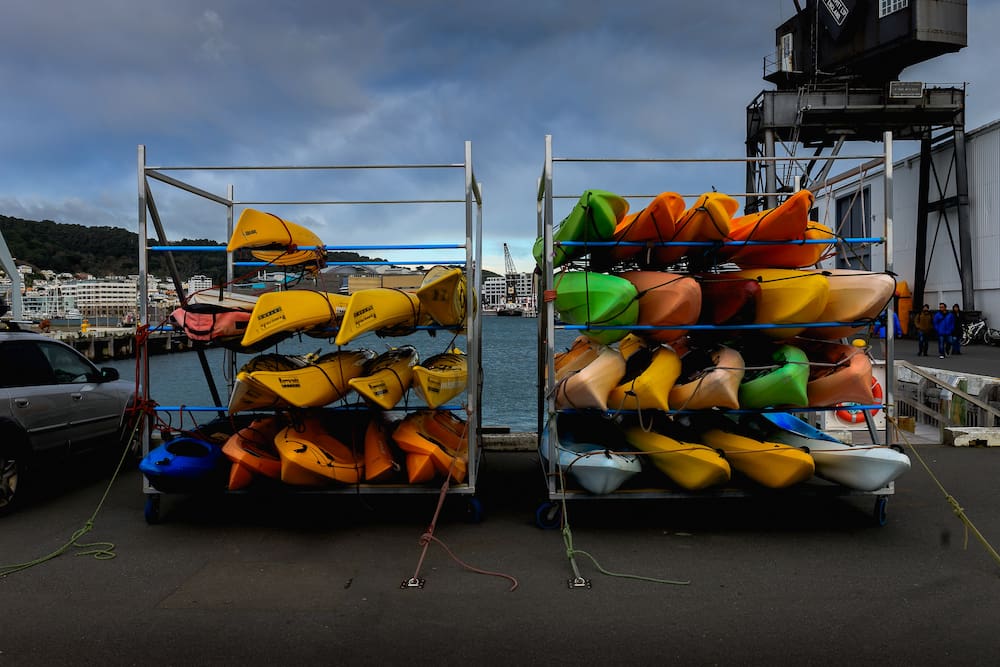5 Easy Kayak Storage Tips to Keep Your Kayak Damage-Free
.jpg?sfvrsn=df0a536f_0)
After enjoying a season of fun and adventure on the water, going down waterfalls, and beating some gnarly rapids, it may be time to look for kayak storage! In some areas, you can kayak year-round. But many paddlers have to say goodbye to the water and hello to kayak storage once the weather gets cool.
Before you go and put your kayak on the dining room table, the garage floor, or in your backyard, consider self-storage. After spending money on your kayaking passion, don’t let haphazard storage damage or even ruin your boat!
We’ll cover the different types of kayaks and how to store them. Even if you can kayak 365 days a year (we’re jealous), you can still use these tips between kayaking trips! Store Space is here to help you keep your kayak in tip-top shape, so it’ll be ready to go whenever you’re ready to get back on the water.
Improper Kayak Storage Methods
Before we get into the right ways to store your kayak, it's important to know the improper kayak storage methods.
1. Exposed to the elements
UV rays destroy plastic, so it's important to avoid leaving your vessels in the open. Leaving them out in the open for a day or two won't cause long-term damage, but the more they're exposed to the sun, the more the plastic will deteriorate. Plus, it will also damage any seat cushions or other accessories that you have.
2. On its end
It may be tempting to prop your kayak up in the corner of your garage, but this is a bad idea. Over time, it will distort the shape of the plastic and warp your bow or stern. It'll make it harder to steer and could result in the plastic cracking. Additionally, you don't want it to fall on anyone.
3. On a hard surface
In the same way that standing it on its end can warp the plastic, resting the hull on a hard surface can also damage your boat. They aren't designed to rest their entire weight on the hull when set on a hard surface, so its important to avoid this common pitfall.
4. Hanging from handles or straps
Handles and straps aren't designed to hold the entire weight of a kayak. Doing so can warp your kayak wherever the handles/straps are fastened. Furthermore, they can break. This can easily crack your kayak, rendering it unusable.
5. Suspended by the bow and stern
Supporting only the front and back will also lead to warping. This is because the ends of the boat aren't meant to support the middle. Over time, it will sag in the middle.
Types of Kayaks
Kayaks can be split into two main groups—flat-water kayaks and whitewater kayaks. Flat-water kayaks are mainly for recreational use on still bodies of water, while whitewater kayaks are for the professionals and adrenaline junkies who want to battle big rapids going downriver. There are five types of flat-water kayaks—sit-inside, sit-on-top, touring, inflatable and pedaling kayaks, and there are four types of whitewater kayaks—play boats, creek boats, river runners and inflatables.
Flat-water kayaks
- Sit-on-top kayaks – no closed cockpit to sit in, likely to get wet or fall in the water, very stable
- Sit-in kayaks (recreational sit-in kayaks) – about 10 feet long, not the fastest or best tracking kayak
- Touring kayaks – about 12 feet, smaller cockpit, more expensive
- Inflatable kayaks – made of a sturdy material like PVC, Hypalon or Nitrylon, easy to put away and store, but if it gets a hole, you’ll be swimming to shore
- Pedaling kayaks – can travel further (because you propel the kayak with your legs instead of your upper body), offer propeller and flipper options

Whitewater kayaks
- Play boats – made for playing, about 6 feet long, allows paddlers to do tricks on the water
- Creek boats – about 8 feet or longer, high volume kayaks
- River runners – about 7-8 feet long, comfortable, good tracking
- Inflatables – inflatable kayaks, but made for more intense rapids, wide and stable
When you hear "Houston," kayaking may not be the first thing you think of. But, these 10 places to kayak near Houston will change your mind. Check out Buffalo Bayou for an urban kayaking experience, or visit 288 Lake for a peaceful, quiet day of paddling. The best part? Store Space has a facility in Houston, so you have the perfect spot to store your boat when you’re not on the water.

Types of Kayak Storage
It’s crucial to think about where you will be storing your kayak—indoors or outdoors. Both are acceptable but try to avoid outdoor kayak storage if you can. If it’s your only option, make sure you consider the climate in your area, and carefully cover and protect your kayak from the elements.
In the Garage
Kayaks can take up a good chunk of space in the garage. Use a celling rack, kayak hoist, or wall racks to save space and protect the exterior from dirt and abrasion in your garage. These solutions cost $60 or less and are well worth it to preserve the life of your kayak.
Indoor storage
Indoor kayak storage is the safest, most popular method to keep your kayak in the best condition. By keeping it indoors, you avoid any damage from the climate.
Store Space offers indoor storage units that are perfect for kayak storage. Our drive-up units can be used to keep your watercraft safe. We have a variety of sizes (and some with climate control), so even your largest kayak will have a home during the off-season or between adventures. If you can carry your kayak, you won’t need drive-up storage. Some of the smaller boats like those for whitewater kayaking should fit in an interior unit.
Outdoor storage
If you must store your kayak outside, it’s crucial to keep it covered. You can use something simple like a tarp, or an actual kayak cover. It’s also important to keep your kayak upside down, so it doesn't collect water or dirt.
Outdoor parking at Store Space can be used for kayak storage. We suggest only storing your kayak outdoors short-term, to make sure your kayak does not get damaged by the climate. You can also store your trailer (that hauls your kayak and other watercraft) in our parking spaces, to provide more protection.
The Best Manmade Whitewater rafting course in the world is in Columbus, GA. The course is not for beginners—it starts with Class III rapids and includes a Class IV+ toward the end. At 2.5 miles long, it’s the longest urban whitewater rafting course in the world. Aren’t you glad Store Space has multiple locations in Columbus, GA? After battling the rapids, drop off your kayak to store until your next daredevil experience with nature.

Five Important Kayak Storage Tips
Kayak storage can slightly vary depending on the type of kayak, but there are a few main things to consider. Where and how you store your kayak can be the difference between a long-lasting boat and one that must be replaced more frequently.
1. They’re sensitive
Okay, they’re not THAT sensitive, they carry you over rapids and waterfalls and gnarly cliffs and Class VI waves. But, when you’re storing your kayak (especially long-term), you need to protect it from the elements.
- Sun – UV rays can fade or damage any material on the outside of a kayak, so they should be kept in a shaded area or indoors.
- Heat – Just like UV rays can cause damage, any extreme heat can as well. Don’t keep your kayak in warm rooms or near heat sources to avoid any melting or damage.
- Moisture – Any moisture can cause mold, fungus or even degrading and warping on your kayak.
2. Hang it up
The last thing you want to do with your kayak is place it on the ground. That’s practically a “come on in” invitation for bugs, dirt, water, critters, etc. So, you’ll want to either put it on a rack or hang it to keep it safe. (See Kayak racks below.)
3. Flip it over
Another thing to remember is to store your kayak deck side down. In layman’s terms, upside down. This will prevent moisture from building in the nooks and crannies of your kayak, therefore preventing mold growth.
4. Make sure it’s comfortable
When storing your kayak, be sure to use padded bars or straps to avoid heavy pressure on certain areas of your kayak. It’s also important to distribute the weight evenly so your kayak doesn’t deform.
5. Cover it up
You'll want to cover your kayak, especially if it’s outside or has a cockpit. If you’re storing your kayak outside, AND it has a cockpit, a cover is an absolute must. Here is more info about cockpit covers specifically.
If you’re in central Florida, you’re practically surrounded by water. Lakes, rivers, the gulf, and the ocean are all within range. So, it’s safe to say kayaking is popular. Check out the top 5 places to canoe and kayak near Orlando, then stop by Store Space in Orlando! We have multiple facilities in the area, so feel free to keep your kayak with us in-between adventures.

Kayak Racks
There are many options for kayak storage. You can buy kayak storage racks and suspension systems from many outdoor/sporting goods stores, or even build your own. Just search “DIY kayak storage” and you’ll be flooded with videos, articles and websites with instructions.
Just remember, go the extra mile to store your kayak, and it’ll go the extra mile downstream for you! Here are some of our favorite kayak storage ideas:
- Sawhorses – This is an easy and convenient DIY kayak storage option. Just use a few sawhorses wrapped with a towel or blanket. Then set your kayak on top, upside down of course—ta da!
- Floor rack – You can store kayaks on store-bought or homemade free-standing racks. You can make these out of wood or PVC pipe, and some can hold up to six kayaks!
- Wall rack – You can find a variety of wall rack/mount options for your kayaks. Some wall mounts allow for your kayak to be stored on its side, or upside down.
- Ceiling suspension – This is a little more complicated to set up, but you can also suspend your kayak from the ceiling. Still hang your boat upside down or on its side and be sure to use wide straps around your kayak.
Pro tip: You can use any free-standing kayak rack in a storage unit—including sawhorses, DIY or store-bought floor racks. Just remember most unit doors are 7 ft. tall, so your kayak rack must be shorter in order to fit.

FAQs About Kayak Storage
Q: How to build a kayak storage rack?
A: There are a variety of ways to build a kayak storage rack. You can use materials like PVC pipe or wood, and create a wall rack, floor rack or even a suspension system. Here are a few ideas and plans for DIY kayak storage.
Q: How to build a free-standing kayak storage rack?
A: You can find a variety of plans and videos with instructions to create a free-standing kayak storage rack. Here is an example of how to make an outdoor kayak storage rack with PVC pipe.
Q: Is it ok to store kayaks outside?
A: Yes, you can store kayaks outside. But, keep in mind it is best to use outdoor kayak storage for a short period of time, to prevent any damage caused by the climate. You’ll also want to purchase a kayak cover to help shield your boat.
Q: Should kayaks be stored upside down?
A: Storing your kayaks upside down is the best move. Some mounts and racks allow your kayak to be stored on its side but keeping your kayak upside down will be the safest position.
Wrapping Up Kayak Storage
A storage unit is the best place for your kayak while you’re not crushing those rapids. Our clean and secure facility will keep your kayak safe and protected until you need it. But we can handle more than just kayaks. Think of us for any of your storage needs; just check out our self-storage guide for more info! You can find your nearest Store Space with our storage location finder.






